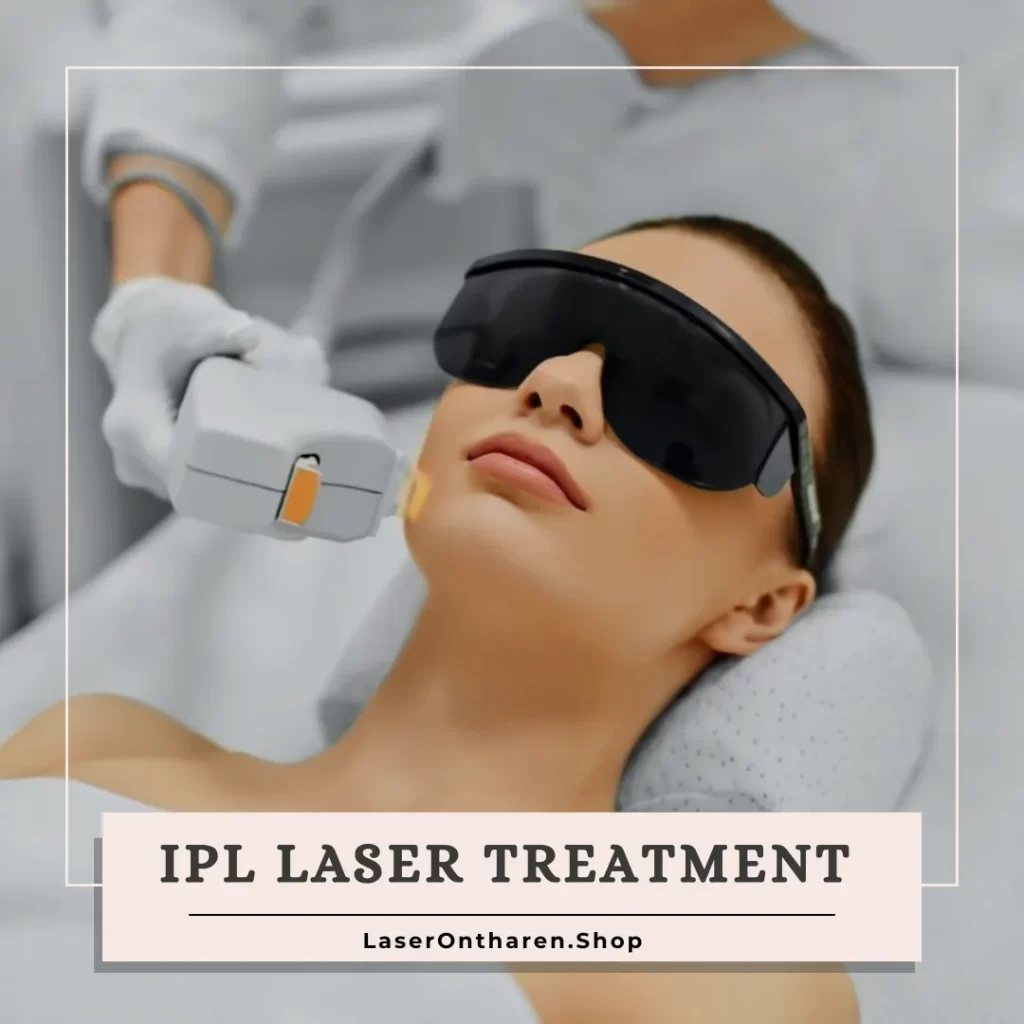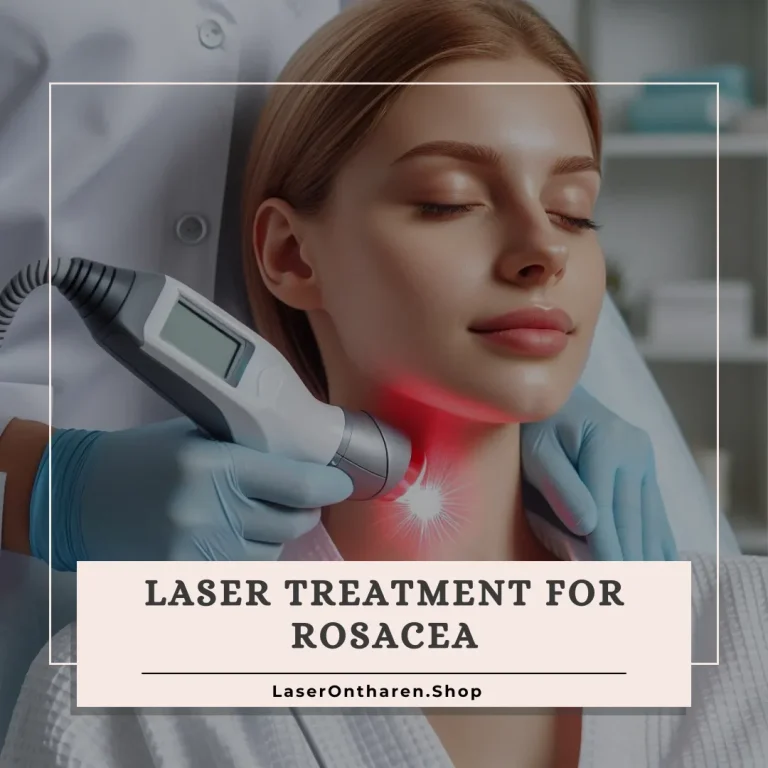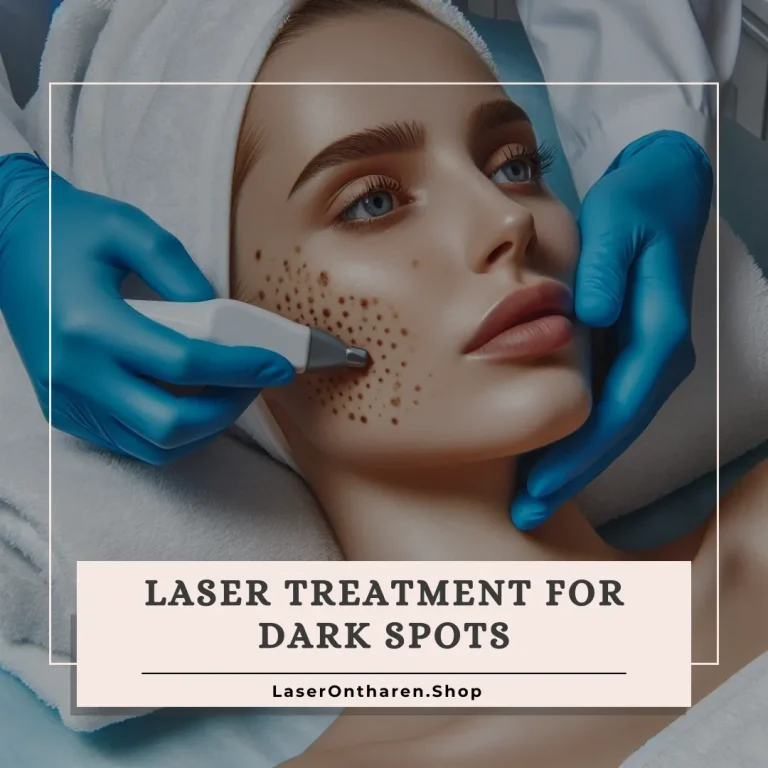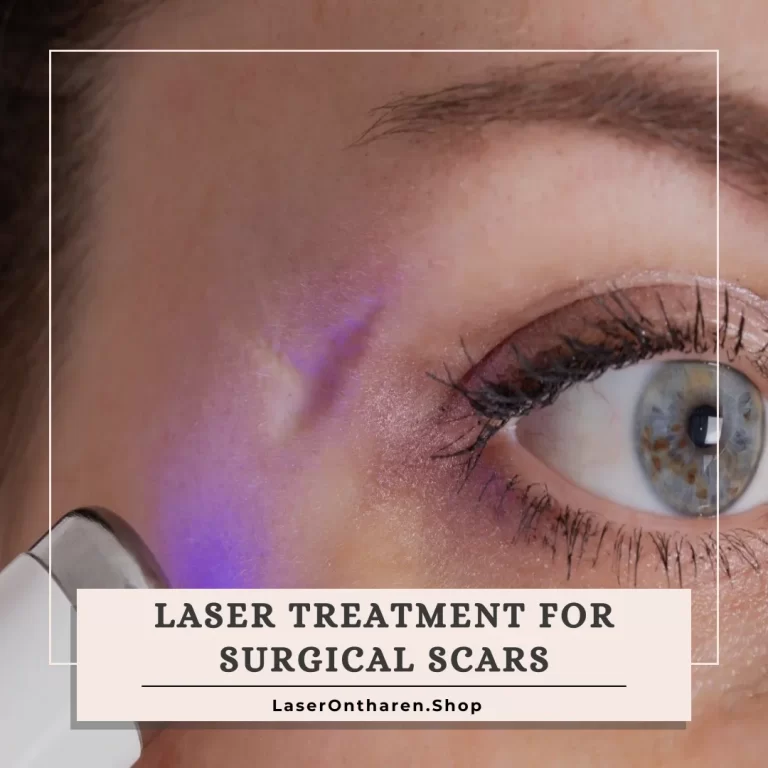Introduction to IPL Laser Treatment
IPL, or Intense Pulsed Light, is a versatile technology widely used in both cosmetic and medical fields.
Unlike traditional lasers that emit a single wavelength of light energy, IPL uses a broad spectrum that allows it to perform various functions, from skin rejuvenation to hair removal.
This technology provides a non-invasive solution to a range of skin issues, including sun damage, age spots, and irregular pigmentation.
Ideal for those seeking a significant improvement in their skin’s appearance without the downtime associated with more invasive procedures, IPL has become a go-to option for many.
In this article, we’ll explore how IPL works, its benefits, the typical process involved, and much more to give you a comprehensive view of what to expect from IPL laser treatments.
- Warning
Before undergoing any laser treatment, it’s essential to consult with a qualified dermatologist or cosmetic surgeon who can assess your specific concerns and recommend the most appropriate treatment for your skin type and condition.
They can also provide information about the potential risks, benefits, and expected outcomes of the procedure.
How IPL Works
Intense Pulsed Light (IPL) therapy employs a broad spectrum of light to deliver energy to targeted cells within the skin.
Unlike lasers, which use a single, focused wavelength of light, IPL uses a range of wavelengths, allowing it to treat multiple conditions simultaneously.
This flexibility makes IPL a particularly versatile tool in aesthetic and therapeutic skin treatments.
The Mechanism
IPL devices emit short bursts of a powerful, broad-spectrum light that penetrates the skin to various depths depending on the setting.
This light is absorbed by pigments in the skin like melanin (which colors our hair and skin) and hemoglobin (found in blood vessels).
When these pigments absorb the light energy, it gets converted into heat. This heat then destroys the unwanted pigment or blood vessel while leaving surrounding tissues unharmed.
Common Uses of IPL
IPL’s versatility allows it to address a wide array of skin issues effectively.
Here’s a closer look at some of the most common applications of IPL laser treatment:
Skin Rejuvenation
IPL is highly effective at improving the overall appearance of the skin.
It can reduce the visibility of age spots, sun damage, and freckles, making it a preferred choice for those looking to achieve a more even skin tone.
IPL also enhances skin texture by stimulating collagen production, which diminishes fine lines and wrinkles, leading to smoother, more youthful-looking skin.
Hair Removal
IPL hair removal is a popular alternative to waxing, shaving, or electrolysis, especially for those looking for longer-term solutions.
The treatment is most effective on individuals with darker hair and lighter skin, although advancements have made it increasingly effective for a broader spectrum of hair and skin colors.
The light targets the pigment in the hair, damaging the follicle and inhibiting future growth.
Treating Vascular Lesions
This treatment is especially beneficial for individuals suffering from rosacea, spider veins, and other vascular lesions.
IPL reduces redness and the visibility of these lesions by targeting the blood vessels without harming the surrounding skin. It’s a preferred method for its precision and minimal discomfort compared to surgical options.
Acne Management
For chronic acne sufferers, IPL can offer relief by reducing both the inflammation and the bacteria responsible for acne outbreaks.
The light therapy helps shrink the oil glands, decreasing oil production, which is a key factor in acne development.
Regular treatments can lead to significant improvements in skin clarity and a reduction in the occurrence of breakouts.
Pigmentation and Discoloration Treatment
Hyperpigmentation, such as melasma or dark spots, can be effectively treated with IPL.
The light targets darker patches of skin, breaking down the excess melanin that causes discoloration. Over a series of treatments, the skin becomes lighter and more uniform in color.
Cost of IPL Laser Treatment
The cost of IPL treatment can vary widely depending on the geographic location, the facility, the area being treated, and the number of sessions required.
Typical Costs
- Single Session: Depending on the treatment area, costs can range from $300 to $600 per session.
- Package Deals: Some clinics offer packages for multiple sessions, which can provide a cost-saving compared to paying for individual sessions.
Factors Influencing Cost
- Practitioner Expertise: More experienced practitioners typically charge more.
- Geographic Location: Prices tend to be higher in metropolitan areas compared to smaller towns.
- Treatment Area Size: Larger areas, like the back or legs, will cost more than smaller areas like the upper lip.
Insurance and Financing
Most insurance plans do not cover IPL treatments as they are considered cosmetic procedures. However, some clinics offer financing plans to help manage the cost over time.
- +31623800046
- info@laserontharen.shop
IPL Laser Treatment Near Me
To find IPL laser treatment providers near you, start by researching local dermatology clinics, medical spas, and aesthetic centers.
Use online review platforms such as Google Reviews, Yelp, and RealSelf to read patient reviews and ratings.
Additionally, check professional associations like the American Academy of Dermatology for certified practitioners.
Personal recommendations from friends or family can also be valuable.
When selecting a provider, ensure they have experience with IPL treatments and use FDA-approved equipment.
Schedule a consultation to discuss your goals, assess their expertise, and determine if they are the right fit for your needs.
IPL Laser Treatment for Hair Removal
IPL laser treatment is an effective method for permanent hair reduction.
The light energy targets the pigment in hair follicles, damaging them and preventing future hair growth.
Multiple sessions are typically required to achieve optimal results, as IPL is most effective during the active growth phase of the hair cycle.
This treatment is suitable for various body areas, including the face, legs, arms, and bikini line.
Risks and Side Effects of IPL Laser Treatment
While IPL is a relatively safe treatment when performed by a qualified practitioner, like any medical procedure, it carries potential side effects and risks.
Awareness and understanding of these can help individuals make informed decisions and take necessary precautions.
Common Side Effects
These are typically mild and temporary, including:
- Redness and Swelling: Most patients experience some degree of redness and swelling immediately after treatment. This usually subsides within a few hours to a few days.
- Increased Pigmentation: Sometimes, areas treated with IPL may darken before they lighten, particularly in individuals with darker skin tones or those who have sun exposure before or after treatment.
- Mild Pain: The treatment might feel like a rubber band snap on the skin during the session, with some tenderness following.
Rare But Serious Side Effects
These occur less frequently but require immediate attention:
- Blistering and Burns: If the IPL device is set too high or if the skin reacts unexpectedly, there is a risk of burns or blisters.
- Scarring: Although rare, there is a small risk of scarring, particularly if post-treatment care guidelines are not followed properly.
- Changes in Skin Texture: Some patients might notice changes in skin texture or the development of new skin issues.
Risk Mitigation
To minimize risks, consider the following precautions:
- Choose a Qualified Practitioner: Ensure that your treatment provider is experienced and qualified. Ask about their training, certifications, and the number of IPL treatments they have performed.
- Follow Pre- and Post-Treatment Instructions: Adhering to the specific guidelines provided by your practitioner, such as avoiding sun exposure and certain skincare products, is crucial for safe and effective treatment.
- Report Any Concerns: If you experience unusual or prolonged symptoms, contact your practitioner immediately.
Best IPL Laser Treatment
The best IPL laser treatment involves a combination of advanced technology, experienced practitioners, and personalized care.
Look for clinics that use the latest FDA-approved IPL devices from reputable brands such as Lumenis, Cutera, and Cynosure.
These devices offer customizable settings to cater to different skin types and concerns.
An experienced practitioner should perform a thorough skin assessment and create a tailored treatment plan.
The clinic’s reputation, patient reviews, and before-and-after photos can also provide insights into the quality of care and effectiveness of their IPL treatments.
how do i choose the best IPL laser device suitable for me? go to Best IPL Laser Device page.
Preparing for IPL Treatment
To maximize the benefits of IPL treatments, proper preparation is essential. Here are some guidelines:
- Avoid Sun Exposure: Patients should avoid tanning and excessive sun exposure for at least four to six weeks before treatment to minimize the risk of complications.
- Skin Care Products: Certain products, particularly those containing retinoids or other exfoliants, should be discontinued several days before treatment as advised by a dermatologist.
- Medication Considerations: Discuss any medications you are taking with your provider, as some, like antibiotics or anti-inflammatory drugs, can affect treatment outcomes.
By understanding these common uses and preparing adequately for the procedure, patients can greatly enhance their IPL treatment results.
IPL Laser Treatment Procedure
Understanding the IPL treatment process can help alleviate any anxiety and prepare individuals for what to expect during each session.
Here’s a detailed guide through the steps of an IPL therapy session:
- Consultation
- Preparation
- Protection
- Treatment
- Post-care
Get Your Laser Device Now!
-
+31623800046
-
info@laserontharen.shop
- +31623800046
- info@laserontharen.shop
Before undergoing IPL treatment, a detailed consultation with a skincare professional or dermatologist is essential.
During this meeting, your provider will assess your skin type, discuss your skincare concerns, and determine if IPL is the best treatment option for you.
This step also involves discussing your medical history to ensure there are no contraindications to treatment.
Pre-Treatment Preparation
- Photographs: Your practitioner may take photographs of the treatment area to monitor progress over the sessions.
- Skin Cleansing: The treatment area will be thoroughly cleansed to remove any makeup, oils, and dirt.
- Applying Gel: A cool gel is often applied to the treatment area. This gel helps the light penetrate more effectively and protects the skin’s surface.
The Treatment
- Eye Protection: You will be given protective eyewear to shield your eyes from the bright flashes of light.
- Pulse Application: The IPL device is adjusted to the specific settings for your skin type and condition. The handpiece is then used to apply pulses of light to the skin. You might feel a snapping sensation, like a rubber band being snapped against your skin, which is generally well-tolerated.
- Cooling the Skin: Depending on the device and the clinic, a cooling mechanism may be used during treatment to help soothe the skin and prevent discomfort.
Post-Treatment Care
After the session, the gel is wiped off, and a cooling gel or cream may be applied to help soothe any irritation. Your skin may look red and possibly feel like it is sunburned for a few hours.
Duration and Frequency of Treatments
- Session Length: Each session typically lasts between 20 to 30 minutes, depending on the treatment area.
- Course of Treatment: Depending on the skin concern and the area being treated, multiple sessions spaced about 3-6 weeks apart are usually necessary to achieve optimal results.
Recovery and Aftercare
Post-treatment care is crucial for healing and achieving the best results:
- Avoid Sun Exposure: Protect the treated area from sun exposure to prevent skin damage while your skin is sensitive.
- No Hot Showers or Baths: Avoid hot showers, baths, and saunas for the first 48 hours after treatment.
- Skin Care Products: Use gentle skin care products recommended by your practitioner and avoid any abrasive or exfoliating products.
IPL Laser Treatment for Skin Rejuvenation
IPL laser treatment for skin rejuvenation, also known as a photofacial, targets:
- Sun damage
- Age spots
- Fine lines
- Redness
The broad-spectrum light penetrates the skin, stimulating collagen production and breaking down pigmented cells.
This process promotes skin renewal and results in a smoother, more even-toned complexion.
Multiple sessions, usually spaced four weeks apart, are often recommended for the best results.
Over time, patients typically notice a significant improvement in skin texture, tone, and overall radiance, making IPL an effective option for non-invasive skin rejuvenation.
IPL Laser Treatment Before and After Pictures
Before and after pictures of IPL laser treatment illustrate the potential improvements in skin tone, texture, and pigmentation.
These images typically show a reduction in sunspots, redness, and fine lines, with the skin appearing more even and rejuvenated.
Reviewing these pictures can help set realistic expectations for the treatment.
During your consultation, ask the practitioner to show you a portfolio of their work, ideally featuring patients with similar skin types and concerns to yours. This visual evidence can provide confidence in the procedure’s effectiveness and the practitioner’s skill.
Pros and Cons of IPL Laser Treatment
Pros:
- Versatile (treats multiple skin issues)
- Minimal downtime
- Long-lasting results
- Non-invasive
Cons:
- Multiple sessions required
- Potential side effects (redness, pigmentation changes)
- Varying effectiveness based on skin type
Consult with a qualified practitioner to weigh these factors and determine if IPL is the right choice for you.
IPL Laser Treatment Tips
- Choose an experienced and certified practitioner.
- Avoid sun exposure before and after treatment.
- Follow all pre- and post-treatment care instructions.
- Schedule multiple sessions as recommended.
- Maintain a good skincare routine, including regular moisturizing and sun protection.
Communicate openly with your practitioner about your goals and concerns.
Alternatives to IPL Laser Treatment
Alternatives to IPL laser treatment include:
- Laser Resurfacing: Uses focused laser beams to remove skin layers, stimulating collagen production.
- Chemical Peels: Applies a chemical solution to exfoliate and improve skin texture.
- Microdermabrasion: Mechanically exfoliates skin, removing dead cells.
- Topical Treatments: Retinoids and hydroquinone address pigmentation and texture issues over time.
Each has its benefits and limitations. Consult with a dermatologist to determine the best option for your concerns.
IPL Laser Treatment for Different Skin Types
IPL laser treatment can be customized for different skin types, but it is most effective for lighter skin tones with darker pigmentation issues.
Individuals with darker skin tones are at a higher risk for side effects such as hyperpigmentation or hypopigmentation due to the higher melanin content in their skin.
It is crucial to choose a practitioner experienced in treating diverse skin types and to use appropriate settings on the IPL device to minimize risks.
A thorough consultation and patch test can help determine the suitability of IPL for your specific skin type.
IPL Laser Treatment for Specific Skin Conditions
IPL laser treatment is effective for various skin conditions, including rosacea, sun damage, age spots, and acne scars.
The broad-spectrum light targets the pigments and blood vessels associated with these conditions, promoting a clearer and more even complexion.
For rosacea, IPL can reduce redness and visible blood vessels. For sun damage and age spots, it breaks down pigmented cells.
For acne scars, IPL can stimulate collagen production to improve skin texture.
A consultation with a dermatologist can help determine if IPL is suitable for treating your specific condition.
Well-Known Brands for IPL Laser Treatment
Well-known brands for IPL laser treatment devices include:
- Lumenis
- Cutera
- Cynosure
- Palomar
These brands are recognized for their advanced technology, safety features, and effectiveness in treating various skin concerns.
Choosing a clinic that uses reputable brands can ensure a higher standard of care and better treatment outcomes.
Why IPL Laser Treatment Is the Best?
IPL laser treatment is considered one of the best options for skin rejuvenation and hair removal due to its versatility, minimal downtime, and ability to address multiple skin concerns in a single session.
The broad-spectrum light used in IPL can target a range of pigments and vascular issues, making it suitable for various skin types and conditions. Its non-invasive nature and proven effectiveness contribute to its popularity and high satisfaction rates among patients.
- +31623800046
- info@laserontharen.shop
What to Expect After Treatment
Immediately following treatment, you may notice that dark spots appear darker and slight redness around the treated area.
These changes are temporary and usually subside within a few days.
Over the next few weeks, pigmented lesions will fade, and the skin will begin to look more even and clear.
FAQs About IPL Treatment
To further aid in understanding, here are answers to some frequently asked questions about IPL:
- How long do the results of IPL last?
- Results can vary, but typically, after a complete treatment series, results can last up to a year or more. Regular maintenance sessions are recommended to keep the skin looking its best.
- Is IPL suitable for all skin types?
- IPL is effective on a range of skin types, but it works best on individuals with high contrast between their skin color and hair or pigmentation issues. Advances in technology have made IPL more suitable for darker skin tones, but an expert consultation is still critical.
- Can I go back to work after receiving IPL treatment?
- Yes, IPL generally requires no downtime, and most people return to their normal activities immediately. However, the skin will be sensitive to sunlight, so sun protection is crucial.
wanna learn more about IPL hair removal treatment? check out IPL hair removal page.
Conclusion
IPL laser treatment offers a comprehensive solution for a variety of skin issues, from cosmetic improvements like skin rejuvenation and hair removal to medical treatments for conditions like rosacea and acne.
By understanding the benefits, process, and potential side effects, as well as following the care advice from your practitioner, you can achieve significant improvements in your skin health and appearance.
This concludes our detailed exploration of IPL laser treatment. If you’re considering this procedure, consulting with a dermatologist or licensed skincare professional is an essential next step to ensure it’s right for your skin type and goals.




